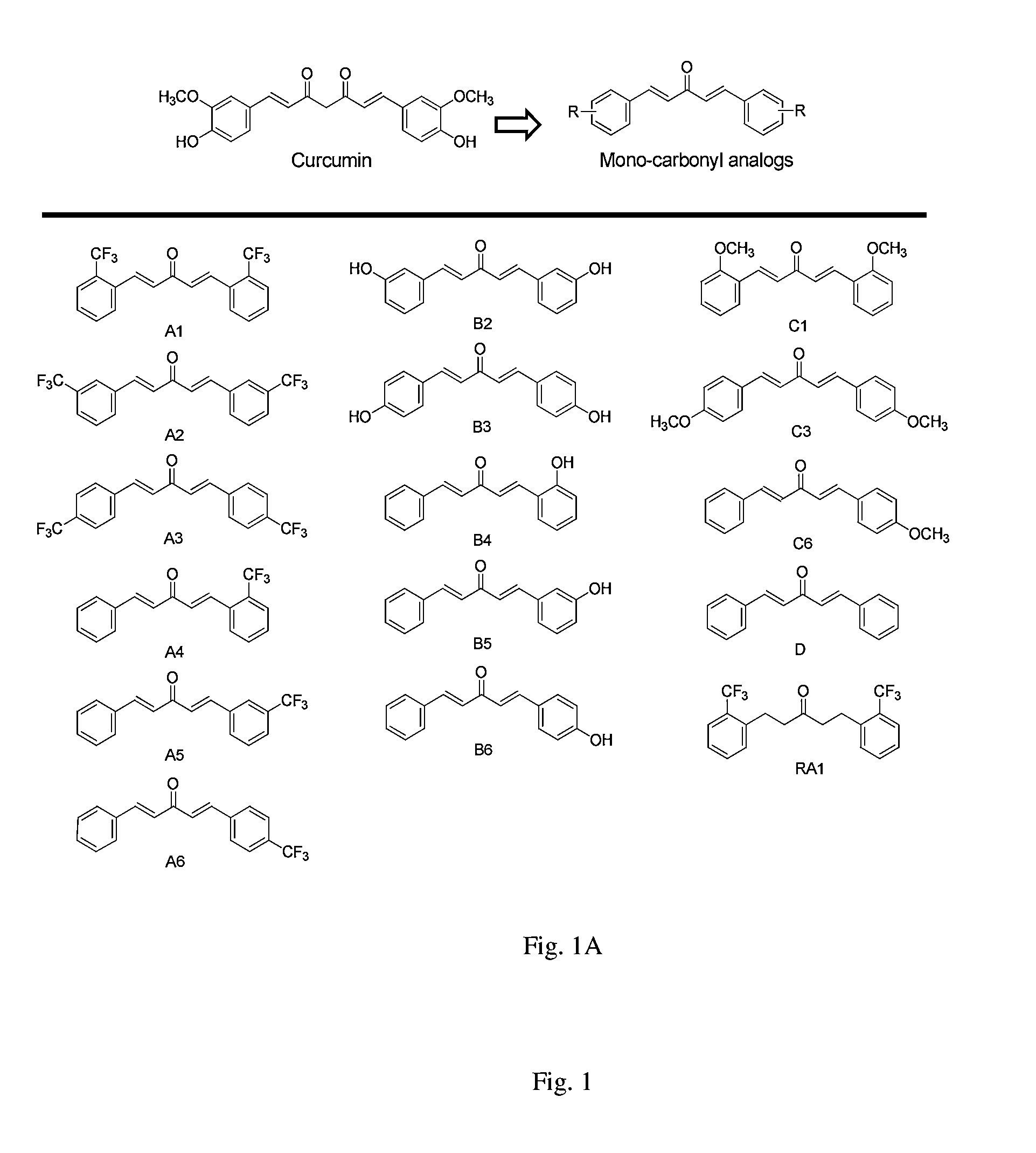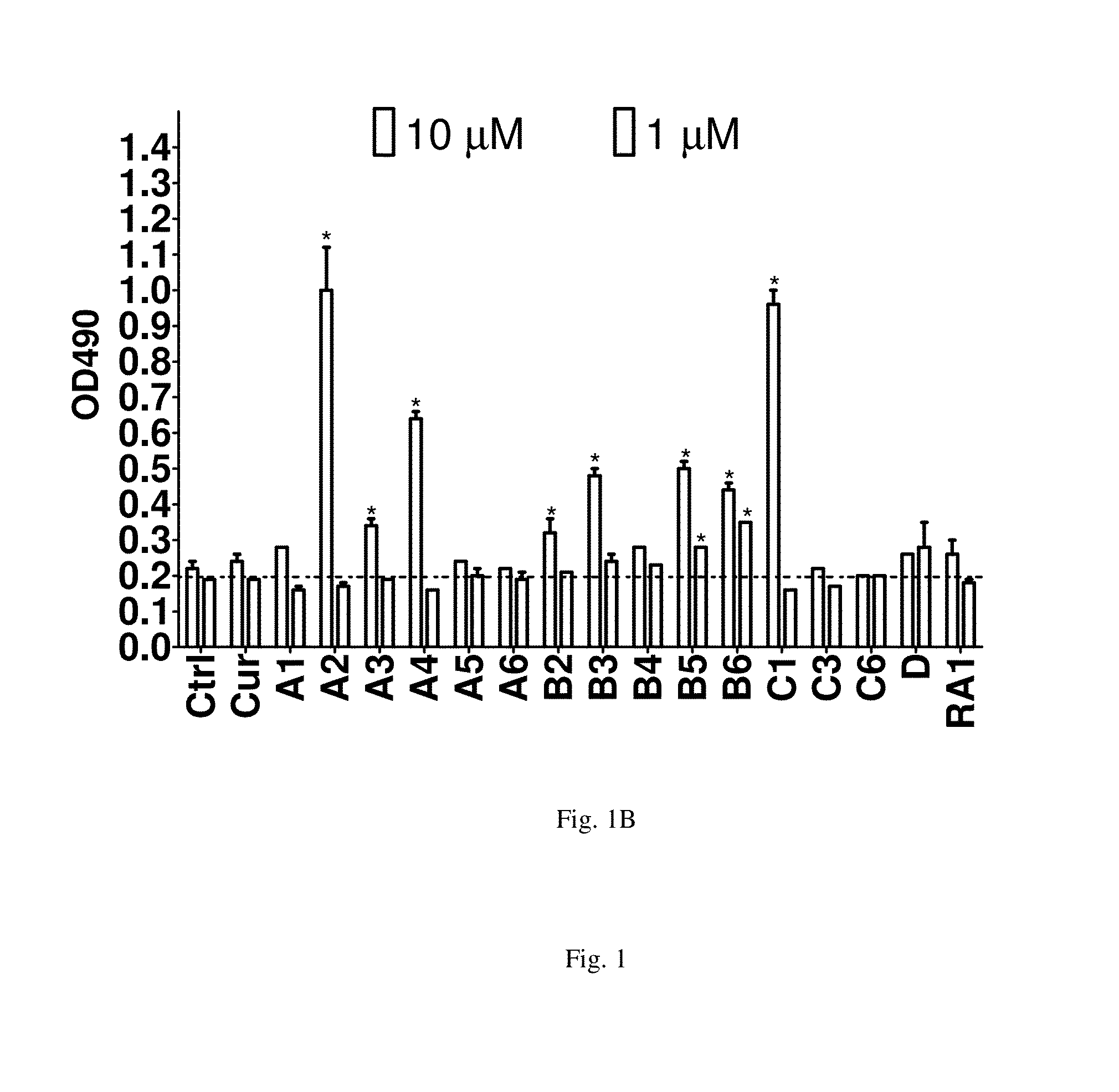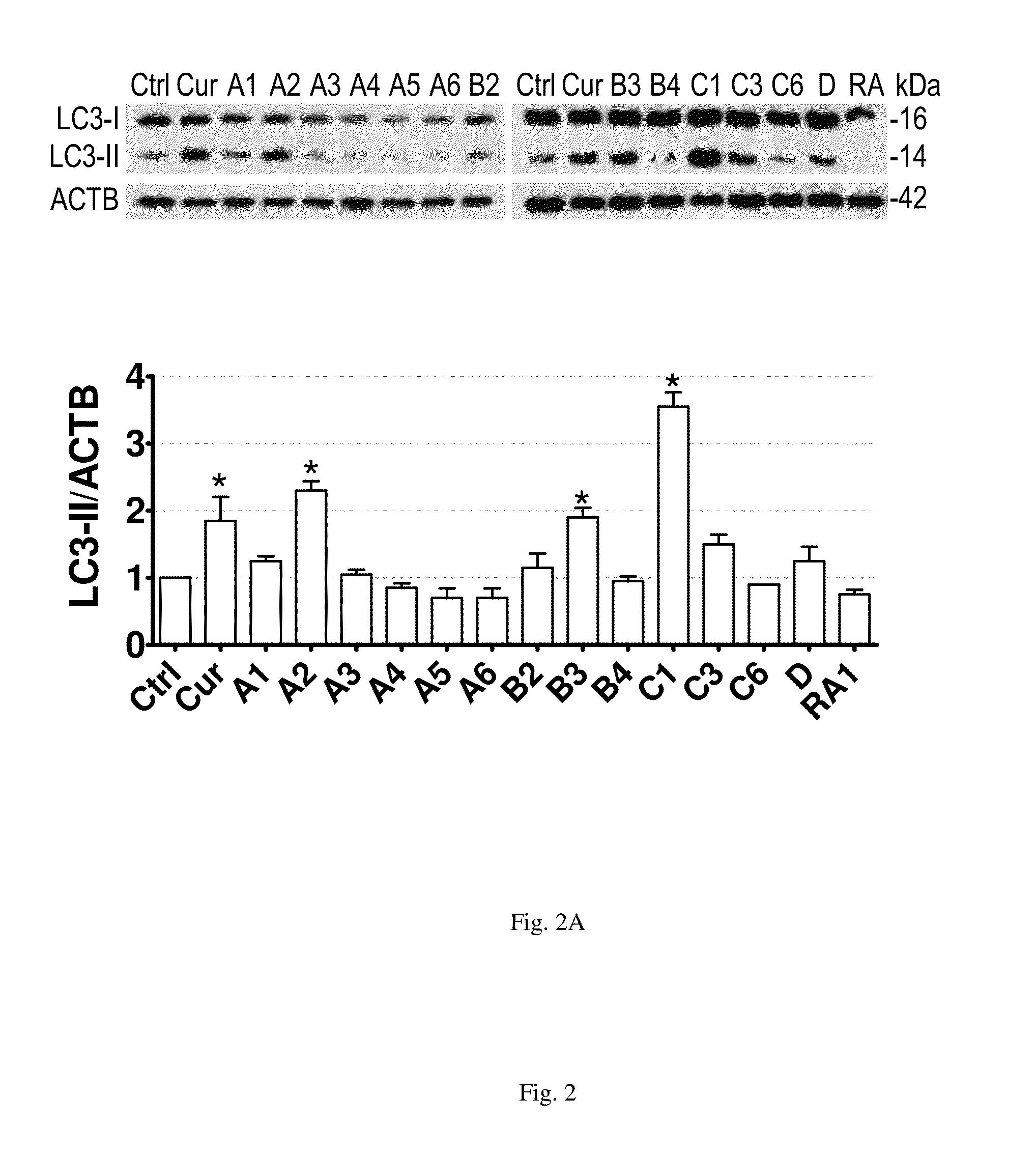MTOR-independent activator of TFEB for autophagy enhancement and uses thereof
a technology of mtor and mtor-dependent activator, which is applied in the direction of drug compositions, ketone active ingredients, and nerve disorders, can solve the problems of poor permeability of trehalose and sucrose to the blood-brain barrier (bbb) and less likely to be useful for long-term use in patients with neurodegenerative diseases, and achieve the effect of enhancing autophagy and lysosome biogenesis
- Summary
- Abstract
- Description
- Claims
- Application Information
AI Technical Summary
Benefits of technology
Problems solved by technology
Method used
Image
Examples
examples
[0090]In the following examples, the following materials are used; various commercial sources for the materials are provided. Details of the various protocols are also set forth below:
[0091]Reagents and Antibodies.
[0092]The trial samples of mono-carbonyl analogs of curcumin are kindly provided by Dr. Zhou Bo (Lanzhou University, China). Compound C1 ((1E,4E)-1,5-bis(2-methoxy-phenyl)penta-1,4-dien-3-one) is synthesized from 2-methoxybenzaldehyde in an one-step reaction. The structure and purity of the compound are confirmed by 1H NMR and HPLC. Curcumin (08511), chloroquine (C6628), doxycycline (D9891), Anti-Flag M2 (F1804) are purchased from Sigma-Aldrich. Torin 1 (2273-5) is purchased from BioVision Inc. Anti-phospho-AKT (ser473) (9271), anti-AKT (9272), anti-phospho-MTOR (Ser2448) (2971), anti-MTOR (2983), anti-phospho-P70S6K / RPS6KB1 (Thr389) (9234) and anti-P70S6K / RPS6KB1 (9202), pan-14-3-3 / YWHA (8312) antibodies are purchased from Cell Signaling Technology. Anti-á-syn / SNCA antibo...
example i
New Autophagy Enhancers Identified from Monocarbonyl Analogs of Curcumin
[0110]First, the inventors tested the cytotoxicity of the testing compounds at 1 μM and 10 μM for 24 h (as shown in FIG. 1A) by LDH assay (FIG. 1B) and used 1 μM concentration subsequently. Curcumin (10 μM) and analogs A2, B3 and C1 (1 μM) significantly increase the levels of microtubule-associated protein 1 light chain 3B (LC3B)-II in N2a cells compared to the vehicle control (0.1% DMSO) (FIG. 2A). In the presence of the lysosomal inhibitor chloroquine (CQ), these analogs further increase LC3-II levels compared with CQ treatment alone (FIG. 2B). Furthermore, in cells depletion of the autophagy-related gene 5 (Atg5) by siRNA, these compounds failed to increase the levels of LC3-II (FIG. 2C). The data indicate that curcumin analogs A2, B3 and C1 enhance autophagy rather than blocking lysosomal degradation.
example ii
Effects of Curcumin Analogs on MTOR Pathway
[0111]Since curcumin enhances autophagy through inhibiting MTOR pathway, the effects of the three newly identified autophagy enhancers on MTOR pathway of the present invention are confirmed. Similar to curcumin, A2 and B3 inhibit the phosphorylation of RPS6KB1 / p70S6K, MTOR and AKT (FIG. 3A and FIG. 3B). Torin1, a potent MTOR inhibitor is used as a positive control. C1 significantly promotes the phosphorylation of RPS6KB1, MTOR and AKT (FIG. 3A and FIG. 3B).
PUM
| Property | Measurement | Unit |
|---|---|---|
| temperature | aaaaa | aaaaa |
| body weight | aaaaa | aaaaa |
| neurodegenerative disorders | aaaaa | aaaaa |
Abstract
Description
Claims
Application Information
 Login to View More
Login to View More - R&D
- Intellectual Property
- Life Sciences
- Materials
- Tech Scout
- Unparalleled Data Quality
- Higher Quality Content
- 60% Fewer Hallucinations
Browse by: Latest US Patents, China's latest patents, Technical Efficacy Thesaurus, Application Domain, Technology Topic, Popular Technical Reports.
© 2025 PatSnap. All rights reserved.Legal|Privacy policy|Modern Slavery Act Transparency Statement|Sitemap|About US| Contact US: help@patsnap.com



